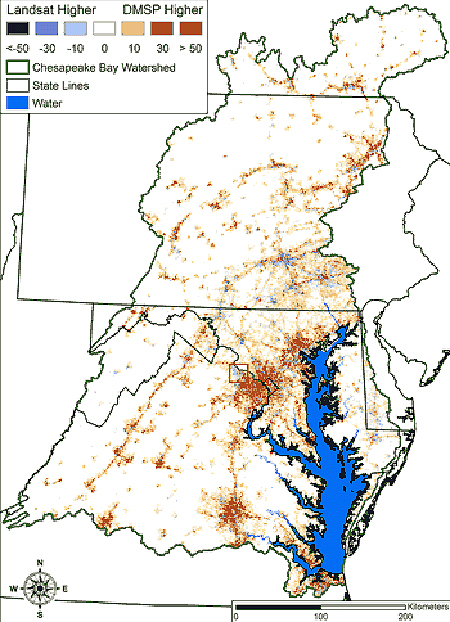|
||
Way DownstreamFrom Space, the Woods Hole Research Center in Massachusetts has captured Chesapeake Bay in satellite maps showing the reach of development throughout the watershed. See for yourself at In Virginia, drought is taking a smoky, fiery toll. In Patrick County near the North Carolina border, a huge wildfire was spreading out of control this week to more than 4,000 acres, threatening dozens of homes. Lik
e Maryland, much of Virginia has experienced record dry conditions this year… In Washington, the National Park Service has a secret plan to cut park budgets in Maryland and across the country by 20 to 30 percent over the next five years, according to internal memos revealed this week by Public Employees for Environmental Responsibility. Superintendents are being told to prepare people by saying that the service
“is tightening its belt as our nation rebuilds from Katrina, continues the war on terrorism and strives to reduce the deficit”… In Pennsylvania, the General Assembly is considering a controversial plan to deal with hot-spot development: building fees of at least $13,000 per home and $15,500 for multifamily units to help pay for local services and schools. You guessed it: Homebuilders and real estate agents are upset… Our Creature Feature comes from Calvert County where, if you fish Lake Lariat, you’d better learn the practice of catch-and-release. The lake, alongside Chesapeake Ranch Estates’ 3,500 homes, had the dubious distinction of the highest concentration of mercury in fish anywhere in Maryland in an analysis of state records last week by the Maryland Public Interest Research Group. Lariat’s largemouth bass showed mercury in concentrations as high as 2,077 parts-per-billion. The EPA has said that at 30 parts, women of childbearing age should start limiting consumption and that at 300 parts, no more than three meals per month should be consumed. All told, 59 percent of Maryland waters had mercury contamination at unsafe levels — but just nine percent over 300 ppb. |
||
|
|
||
|
© COPYRIGHT 2004 by New Bay Enterprises, Inc. All rights reserved.
|



